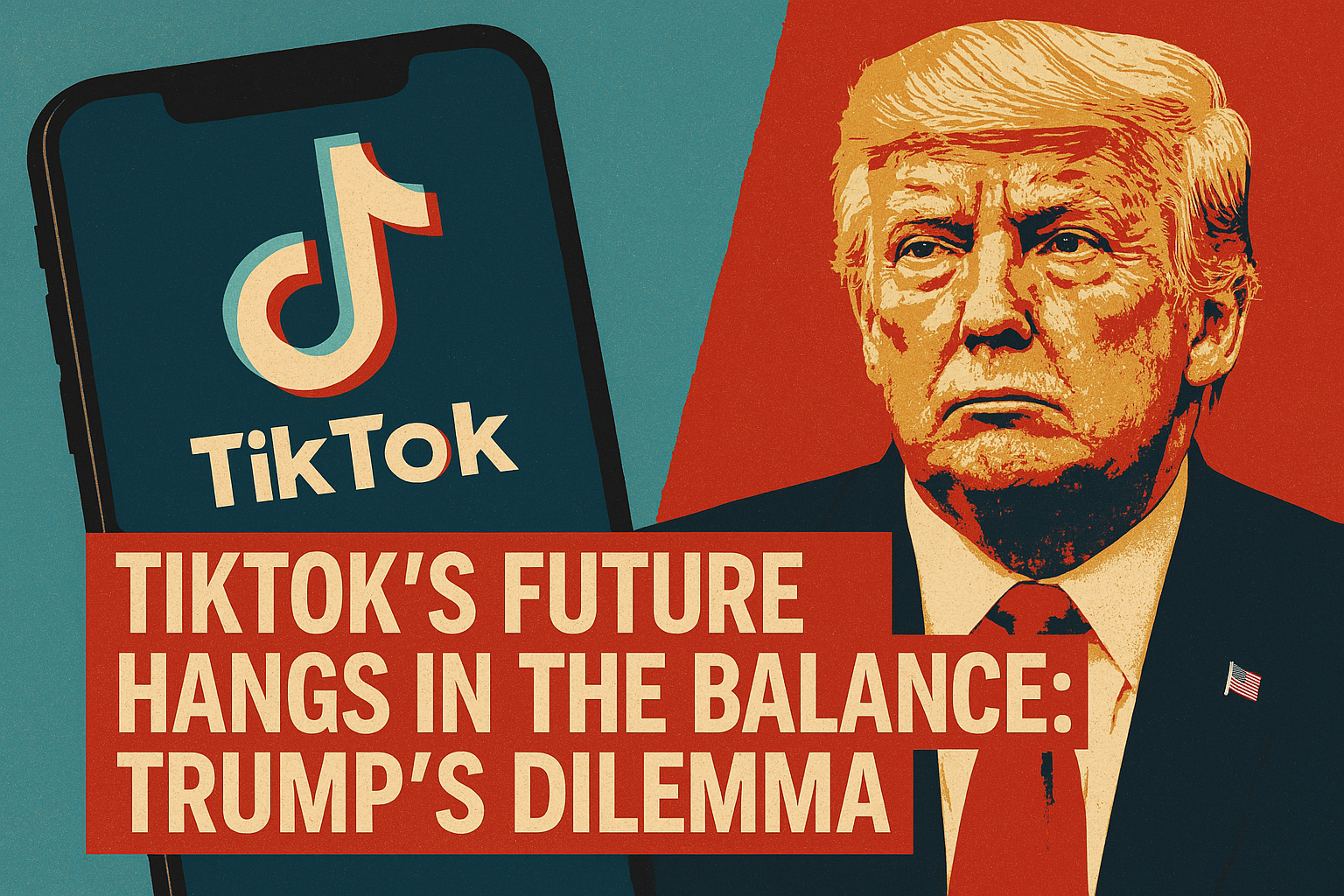
TikTok’s Future Hangs in the Balance: Trump’s Dilemma
In a twist that’s keeping the tech world on its toes, former President Donald Trump finds himself at the center of a high-stakes decision regarding the fate of TikTok. 🎭 As the April 5 deadline for ByteDance to divest from the popular social media platform looms, Trump’s recent executive order has thrown a curveball into the mix.
With national security concerns, legal challenges, and geopolitical tensions swirling, the question on everyone’s mind is: Will TikTok face a ban, or will a last-minute deal save the day?
The clock is ticking, and the stakes couldn’t be higher. Trump’s proposal for a 50% U.S. ownership of TikTok has ignited fierce debate, while potential buyers ranging from tech giants to internet personalities wait in the wings. As negotiations intensify and China’s stance potentially softens, the TikTok saga has become a complex dance of business, politics, and international relations.
🌐 Join us as we delve into the TikTok divestment deadline, explore the legal and operational hurdles, examine Trump’s executive order, and unpack the far-reaching geopolitical implications of this unfolding drama.
TikTok Divestment Deadline and Potential Ban
A. April 5 deadline for ByteDance to divest from TikTok
The Trump administration has set April 5 as the deadline for ByteDance to divest from TikTok’s U.S. operations. This decision follows national security concerns regarding potential data sharing with the Chinese government. Several interested parties have emerged:
| Potential Buyers | Proposed Action |
| Project Liberty | Acquisition |
| MrBeast & Consortium | Acquisition |
| Perplexity AI | Merger |
| Oracle | Ongoing negotiations |
B. Trump’s indication of possible deadline extension
Trump has suggested he might extend the deadline if a sale isn’t finalized. This flexibility aims to facilitate ongoing negotiations, particularly with Oracle, to reduce Chinese ownership below 20%. With this in mind, next, we’ll explore the legal and operational challenges facing TikTok and potential buyers.
Legal and Operational Challenges
A. Separation requirements between TikTok and ByteDance
Following the divestment deadline, TikTok faces significant legal and operational challenges. The primary requirement is the complete separation from ByteDance, its Chinese parent company. This involves:
- Data storage and management
- Operational independence
- Algorithm ownership
B. White House control over content policies and appointments
The White House seeks control over:
| Aspect | Proposed Control |
| Content policies | Direct oversight |
| Key appointments | Approval authority |
| Algorithm access | Potential restrictions |
These measures aim to address national security concerns while maintaining TikTok’s operational continuity in the U.S.
Trump’s Executive Order and Its Implications
A. Temporary reprieve from potential ban
Following the legal and operational challenges faced by TikTok, former President Trump signed an executive order providing a reprieve from the potential ban. This order allows for a 75-day pause in enforcement, giving TikTok a window to negotiate compliance with U.S. intelligence concerns. However, the order’s legality remains questionable as it may conflict with existing legislation.
B. Legal challenges and enforcement concerns
| Aspect | Challenges |
| Legal authority | Ambiguous |
| Congressional support | Limited |
| Enforcement | Paused for 75 days |
The executive order faces potential legal challenges from ban supporters and organizations like the Electronic Frontier Foundation. State and federal agencies may pursue legal action to enforce the ban, creating uncertainty for companies involved in TikTok’s infrastructure.
Geopolitical Considerations
Now that we’ve explored Trump’s Executive Order and its implications, let’s delve into the broader geopolitical considerations surrounding the TikTok situation.
U.S.-China relations impact on negotiations
The TikTok divestment issue has become a focal point in U.S.-China relations. Trump’s willingness to reduce tariffs on Chinese goods demonstrates the complex interplay between trade negotiations and national security concerns. This approach has led to a shift in diplomatic dynamics, with China’s foreign ministry reiterating its opposition to additional tariffs.
Chinese government’s stance on TikTok sale
| China’s Position | Implications |
| Consistent opposition | Complicates negotiations |
| Consent required | Delays potential sale |
| Urges dialogue | Seeks trade dispute resolution |
The Trump administration’s stance on TikTok’s future in the United States remains complex and evolving. As the April 5 divestment deadline approaches, the potential for a ban looms, while various parties express interest in acquiring the platform. The situation is further complicated by legal and operational challenges, including the need for a clear separation between TikTok and ByteDance, as well as compliance with both U.S. and Chinese regulations.
President Trump’s executive order, while providing a temporary reprieve, has raised questions about the interpretation of a “qualified divestiture” and the government’s role in brokering a deal. As negotiations intensify, the outcome will likely have significant implications for U.S.-China relations, national security concerns, and the future of social media platforms. The ongoing TikTok saga serves as a reminder of the intricate interplay between technology, politics, and international diplomacy in our increasingly interconnected world.